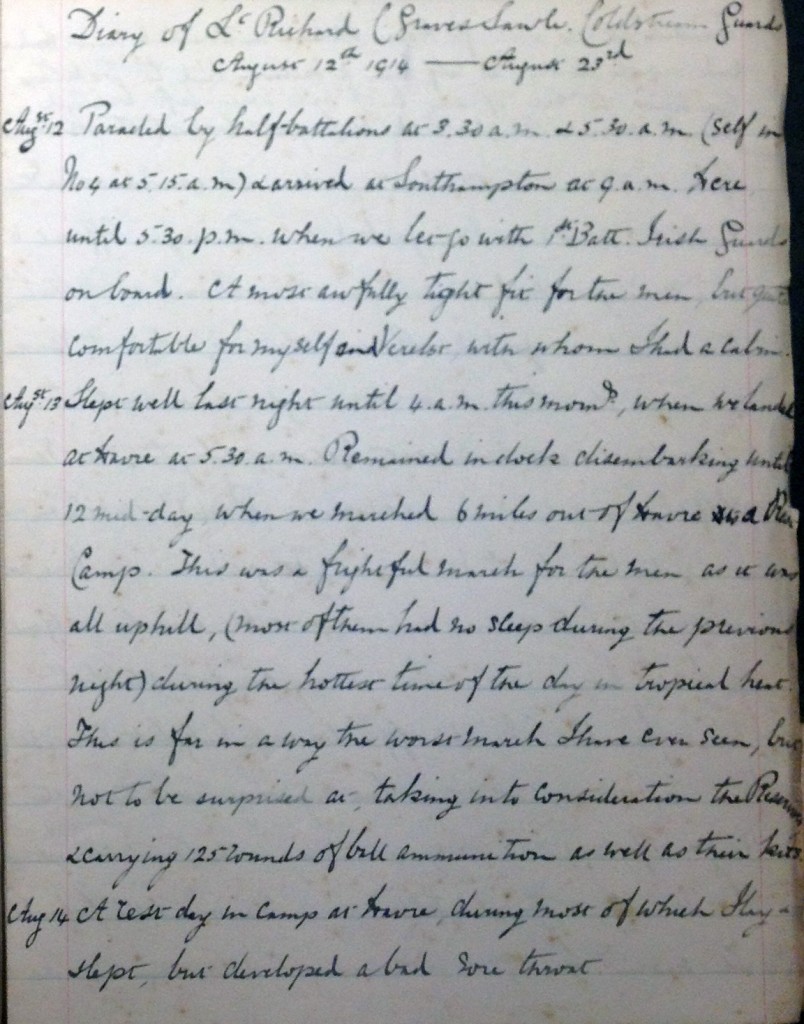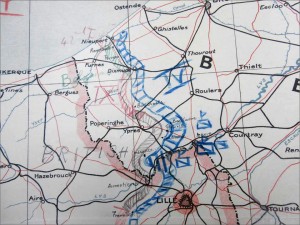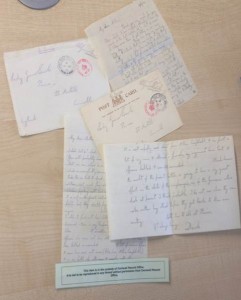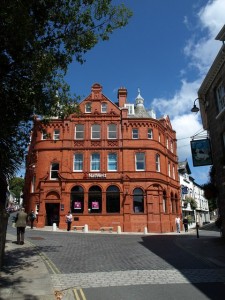Diary extract
After obtaining permission from Cornwall Record Office, we can now show you some photographs of our most recent visit there. If you’re anything like us, we love being able to see the actual documents. They really help to bring Richard’s story to life.
We will note down each reference number for the documents in case you are interested in looking at them yourselves.
The photo below shows an original extract from Richard’s diary (August 1914). All extracts are from the Cornwall Record Office.

Handwritten extract from Richard’s diary, August 12th 1914 – August 14th 1914. Image reproduced with permission from the Cornwall Record Office. Reference: CF/2/674/1
You can read more of Richard’s diary extracts by following our Twitter account, which is tweeting extracts 100 years to the day from when they were written.
Letters
During his time on the front, Richard also wrote letters home to his mother and one to a clothing assistant at Jaeger in London. Here are some quotes from these letters laid out in a table (if you want to read them yourselves, their ref number at the CRO is CF/2/671)
| Date | Quote from Letter |
| 18/9/14 | Passed by Censor (to mother) I should like more Cornish people to see some of the sacked villages I have passed thoroughly lately |
| 29/8/14 | Passed by Censor (to mother) I should think you have heard a certain amount of what has been happening, probably alot more than I know |
| 28/9/14 | (To Seamstress) Will you please have washed if necessary and send me as soon as possible thick Jaeger vest and two pairs of drawers |
| 29/9/14 | Passed by Censor (to mother) Things have been very exciting lately and I think we are in for a big thing shortly |
| 10/10/14 | Passed by Censor (to mother) I have sent Muriel my diary…as a birthday present as well as a Coldstream Star |
| 16/10/14 | Passed by Censor (to mother) It must be remembered that it is not in the French national character to fight a losing fight |
Troop Movements

The map above shows troop movements from the night before Richard’s death on 2nd November 1914; the pencil line shows the allied front which Richard was defending, with the blue line being German. Source: The National Archives.
We were lucky enough to find maps relating to Richard’s movements with the Coldstream Guards at the National Archives at Kew.
The image to the left shows movements from the night before his death on 2nd November 1914; the pencil line shows the allied front which Richard was defending, with the blue line being German.
He was killed near Polygon Wood which was slightly south east of Ypres, so right in the midst of the heaviest fighting (the ‘bulge’ shown with the pencil and blue lines).
Documents such as these really bring home how Richard’s story is a personal one and should not just be remembered as a statistic.
For a more detailed account of our visit to the National Archives, see our progress blog.
How Did the Diary Get to the CRO?
We were told by those working at the CRO that the diary was either donated by a family member (this could have been Rosemary before she died) or the family solicitors. There is a stamp of Shilson & Coode solicitors on the diary transcript, so they may well have commissioned the diary to be transcribed. These solicitors were based in St Austell and the building that was once their base still exists today as Natwest (see picture below.)




